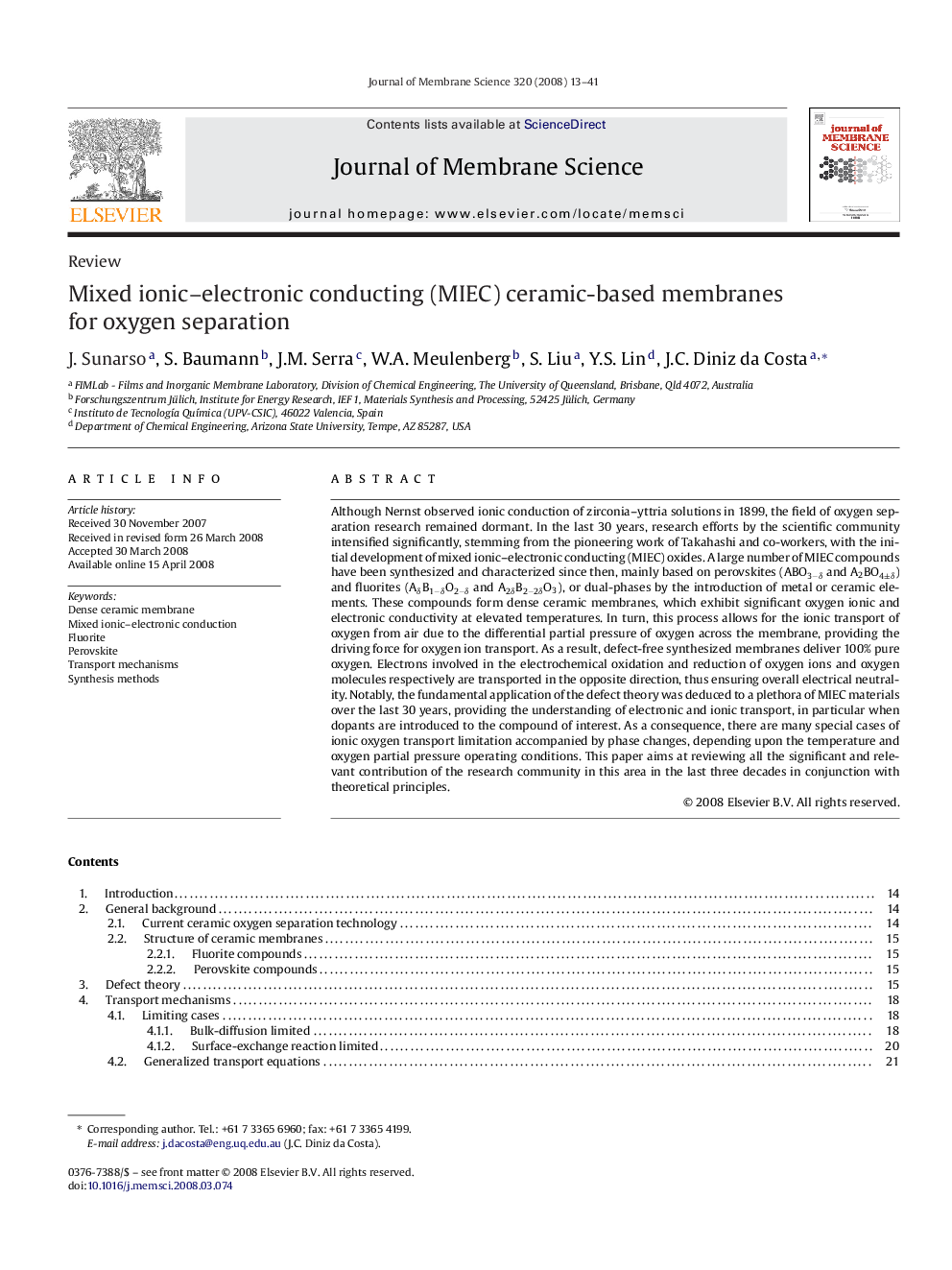| Article ID | Journal | Published Year | Pages | File Type |
|---|---|---|---|---|
| 637474 | Journal of Membrane Science | 2008 | 29 Pages |
Although Nernst observed ionic conduction of zirconia–yttria solutions in 1899, the field of oxygen separation research remained dormant. In the last 30 years, research efforts by the scientific community intensified significantly, stemming from the pioneering work of Takahashi and co-workers, with the initial development of mixed ionic–electronic conducting (MIEC) oxides. A large number of MIEC compounds have been synthesized and characterized since then, mainly based on perovskites (ABO3−δ and A2BO4±δ) and fluorites (AδB1−δO2−δ and A2δB2−2δO3), or dual-phases by the introduction of metal or ceramic elements. These compounds form dense ceramic membranes, which exhibit significant oxygen ionic and electronic conductivity at elevated temperatures. In turn, this process allows for the ionic transport of oxygen from air due to the differential partial pressure of oxygen across the membrane, providing the driving force for oxygen ion transport. As a result, defect-free synthesized membranes deliver 100% pure oxygen. Electrons involved in the electrochemical oxidation and reduction of oxygen ions and oxygen molecules respectively are transported in the opposite direction, thus ensuring overall electrical neutrality. Notably, the fundamental application of the defect theory was deduced to a plethora of MIEC materials over the last 30 years, providing the understanding of electronic and ionic transport, in particular when dopants are introduced to the compound of interest. As a consequence, there are many special cases of ionic oxygen transport limitation accompanied by phase changes, depending upon the temperature and oxygen partial pressure operating conditions. This paper aims at reviewing all the significant and relevant contribution of the research community in this area in the last three decades in conjunction with theoretical principles.
